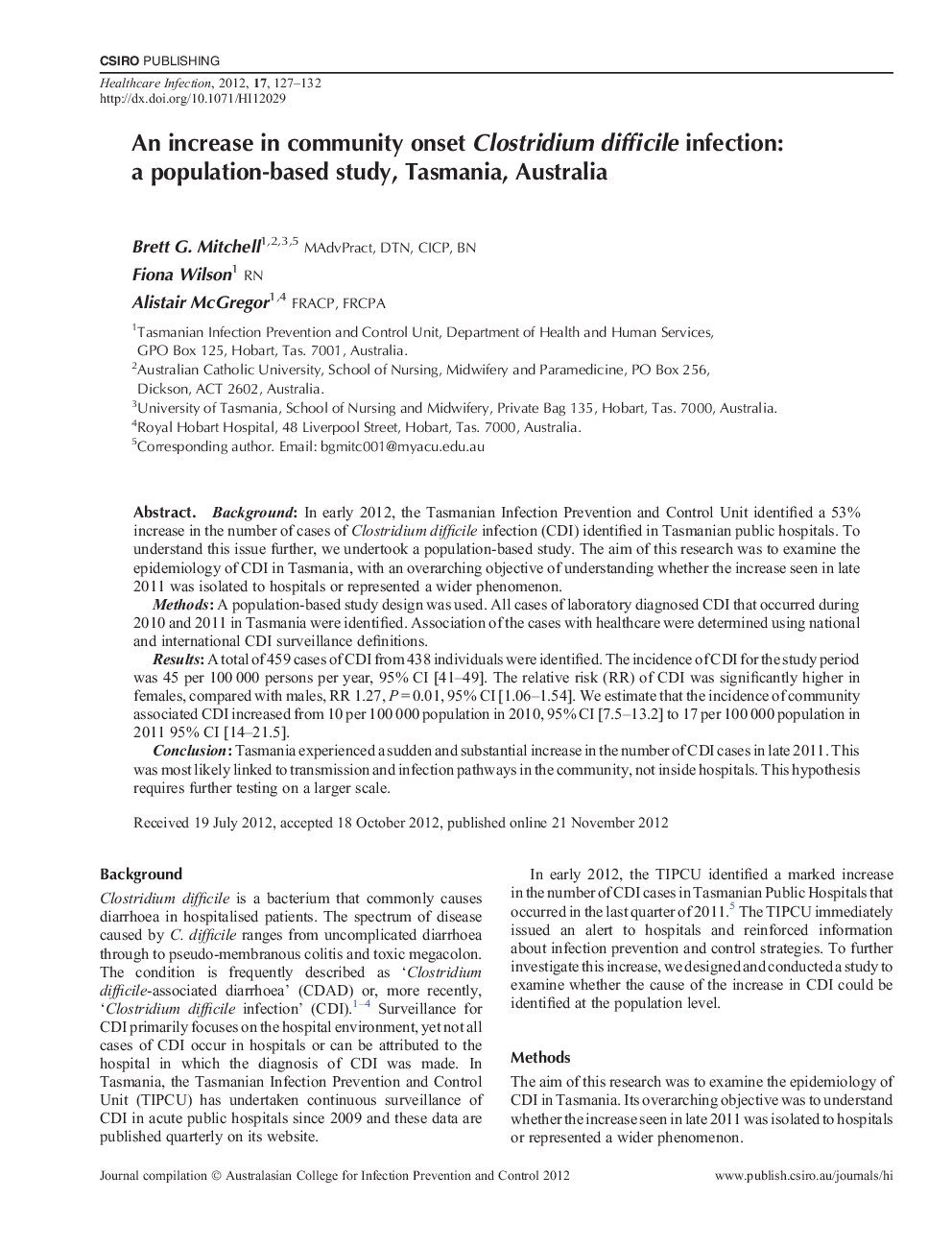| Article ID | Journal | Published Year | Pages | File Type |
|---|---|---|---|---|
| 2683422 | Healthcare infection | 2012 | 6 Pages |
BackgroundIn early 2012, the Tasmanian Infection Prevention and Control Unit identified a 53% increase in the number of cases of Clostridium difficile infection (CDI) identified in Tasmanian public hospitals. To understand this issue further, we undertook a population-based study. The aim of this research was to examine the epidemiology of CDI in Tasmania, with an overarching objective of understanding whether the increase seen in late 2011 was isolated to hospitals or represented a wider phenomenon.MethodsA population-based study design was used. All cases of laboratory diagnosed CDI that occurred during 2010 and 2011 in Tasmania were identified. Association of the cases with healthcare were determined using national and international CDI surveillance definitions.ResultsAtotal of 459 cases of CDI from 438 individuals were identified. The incidence of CDI for the study period was 45 per 100 000 persons per year, 95% CI [41–49]. The relative risk (RR) of CDI was significantly higher in females, compared with males, RR 1.27, P = 0.01, 95% CI [1.06–1.54]. We estimate that the incidence of community associated CDI increased from 10 per 100 000 population in 2010, 95% CI [7.5–13.2] to 17 per 100 000 population in 2011 95% CI [14–21.5].ConclusionTasmania experienced a sudden and substantial increase in the number of CDI cases in late 2011. This was most likely linked to transmission and infection pathways in the community, not inside hospitals. This hypothesis requires further testing on a larger scale.
